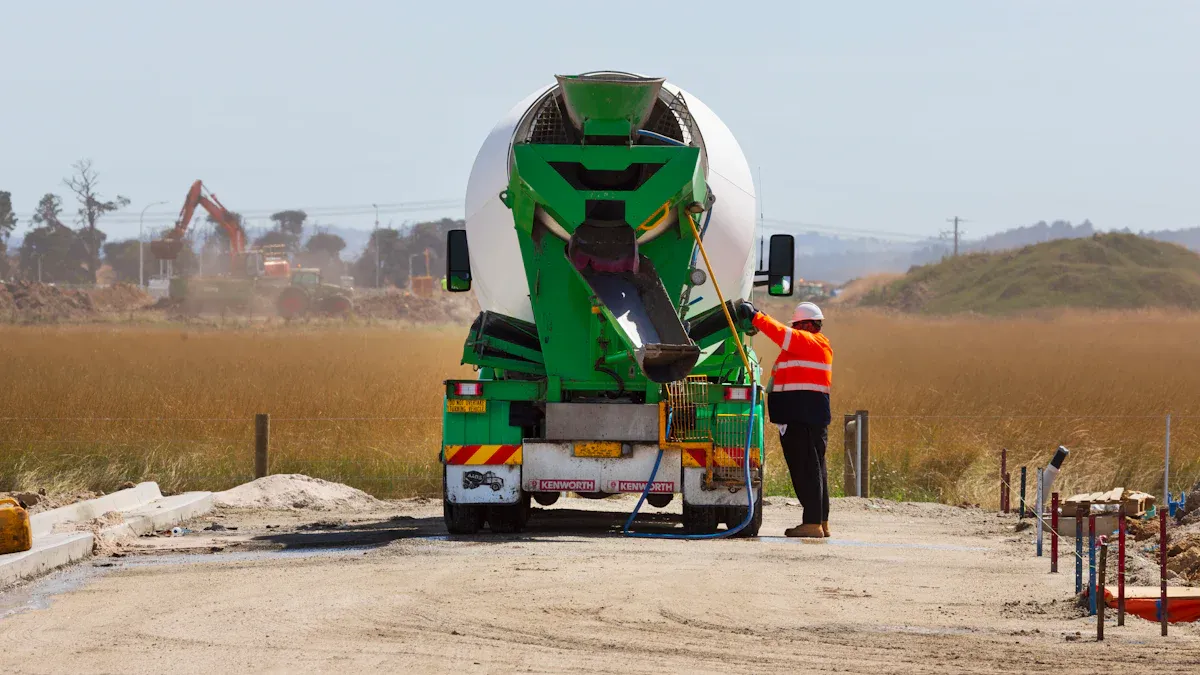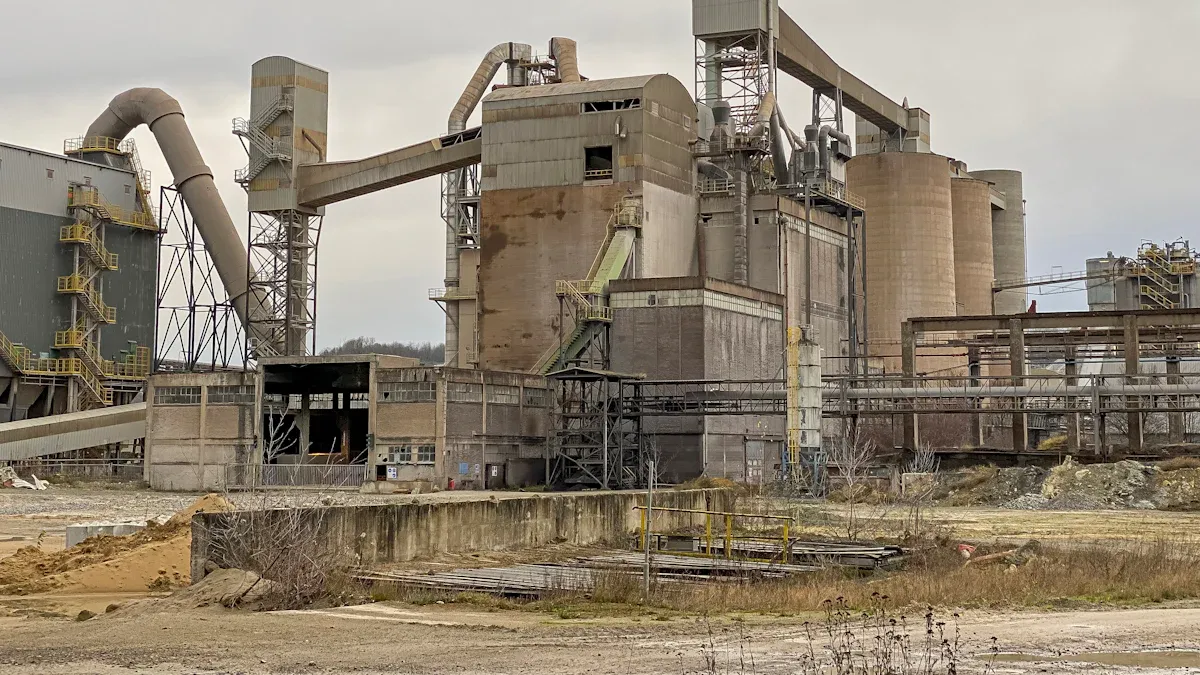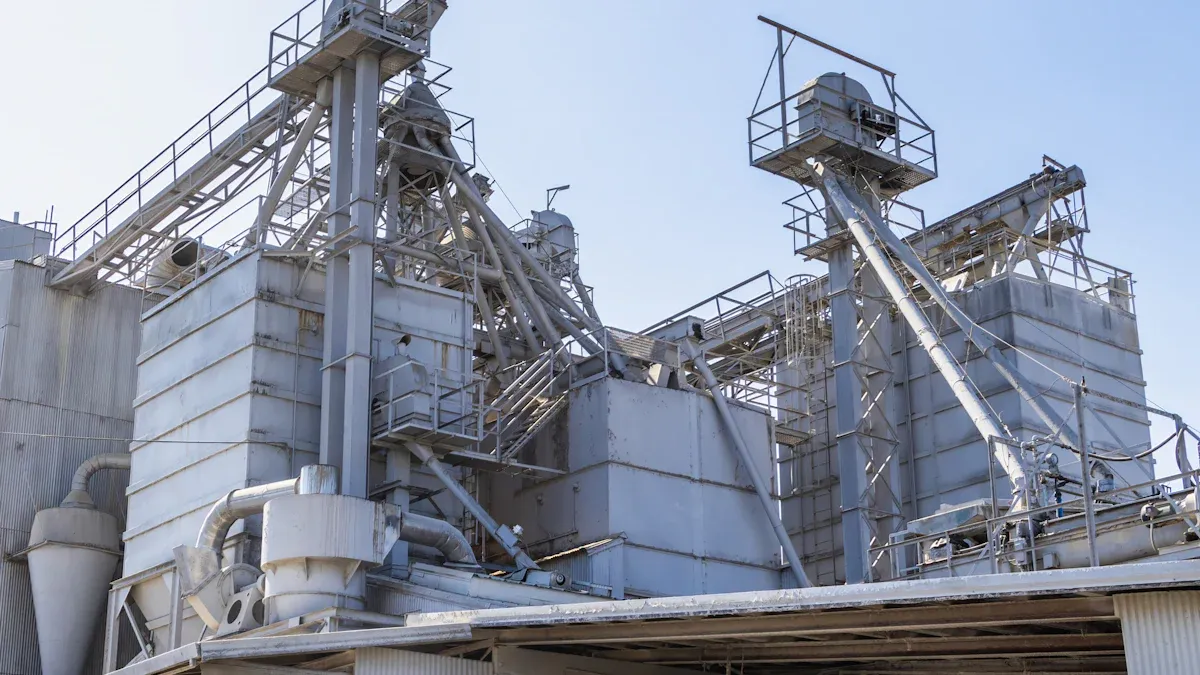
Concrete mixing plant arms are vital parts of a concrete mixing plant. These arms mix materials like cement, water, and aggregates evenly. They ensure the mixture achieves the right consistency. Without them, producing high-quality concrete becomes challenging. Their design and operation play a key role in delivering efficient and uniform mixing results.
Concrete mixing plant arms are the backbone of any concrete mixing plant. These arms are designed to mix materials like cement, water, and aggregates thoroughly. Their primary purpose is to ensure that the mixture achieves a consistent texture and meets the required quality standards. Without these arms, the mixing process would be uneven, leading to poor-quality concrete that could compromise the strength and durability of construction projects.
The design of mixing arms follows strict industry guidelines. These guidelines are based on extensive research and testing to ensure the arms perform efficiently. For example:
- Concrete mix studies help meet agency standards and maintain quality in construction.
- Rigorous testing of materials ensures compliance with regulatory benchmarks.
- Engineers optimize concrete mixes by analyzing material samples to meet design criteria.
By adhering to these standards, mixing arms play a crucial role in producing concrete that meets the demands of modern construction.
Concrete mixing plant arms consist of several key components, each with a specific role in the mixing process. Understanding these components helps you appreciate how the system works as a whole:
- Mixing Blades: These attach to the arms and are responsible for cutting through the mixture. They ensure that all materials are evenly distributed.
- Arm Shafts: These provide the necessary rotation for the arms. Their movement creates the force needed to blend the materials.
- Wear Plates: These protect the arms from damage caused by constant friction. They extend the lifespan of the equipment.
- Bolts and Fasteners: These secure the arms and blades in place. They prevent any loosening during operation.
Each component works together to create a smooth and efficient mixing process. When you maintain these parts properly, you can ensure the longevity and performance of your concrete mixing plant.

Mixing arms in a concrete mixing plant come in two main types: fixed and rotating. Fixed arms remain stationary while the mixing blades attached to them move. These arms are ideal for smaller plants or applications requiring less intensive mixing. They offer simplicity and lower maintenance needs.
Rotating arms, on the other hand, move along with the mixing blades. This design creates a more dynamic mixing process, ensuring better material distribution. Rotating arms are commonly used in larger plants where high-volume mixing is essential. Their ability to handle heavy-duty operations makes them a preferred choice for demanding construction projects.
When choosing between fixed and rotating arms, consider your plant's size and mixing requirements. Fixed arms suit smaller-scale operations, while rotating arms excel in high-capacity environments.
The materials used in mixing arms significantly impact their durability and performance. Titanium alloys and cobalt-chromium alloys are popular choices due to their strength and resistance to wear. Titanium alloys sustain less damage over time, making them ideal for long-term use. Cobalt-chromium alloys, while durable, experience greater material loss under heavy use.
| Material Type | Volumetric Material Loss | Conclusion |
|---|---|---|
| Cobalt-Chromium Alloy | Greater | CoCr stem tapers have significantly more material loss than Ti stem tapers. |
| Titanium Alloy | Lesser | Ti stem tapers sustain less damage compared to CoCr stem tapers. |
In addition to the arm material, the concrete mix itself influences durability. Tests show that mixes with supplementary materials like fly ash (FA) and slag (SL) improve strength. For example, a mix with 30% slag increases compressive strength by 27% and tensile strength by 26%.
| Concrete Mix | Compressive Strength (MPa) | Tensile Strength (MPa) |
|---|---|---|
| Control (100% OPC) | 48.0 | 4.0 |
| 30% FA | 58.80 | 4.77 |
| 30% SL | 60.90 | 5.04 |
| Increase (FA) | 23% | 19% |
| Increase (SL) | 27% | 26% |
Selecting the right material ensures your mixing arms withstand wear and tear while maintaining efficiency. Titanium alloys paired with optimized concrete mixes provide the best results for long-term durability.

Proper maintenance of mixing arms ensures their longevity and optimal performance. Neglecting this can lead to inefficiencies and costly repairs. Here are some essential maintenance tips to keep your mixing arms in top condition:
Inspect Regularly: Check the arms, blades, and wear plates for signs of damage or excessive wear. Early detection prevents further deterioration.
Clean After Each Use: Residual concrete hardens quickly and can reduce the efficiency of the arms. Use water and a stiff brush to clean the arms thoroughly after every mixing session.
Lubricate Moving Parts: Apply lubricant to the arm shafts and other moving components to reduce friction and prevent rust.
Tighten Bolts and Fasteners: Loose bolts can cause misalignment or even damage during operation. Ensure all fasteners are secure before starting the mixer.
Replace Worn Components: Over time, parts like mixing blades and wear plates may need replacement. Use high-quality replacements to maintain performance.
Pro Tip: Create a maintenance schedule to track inspections, cleaning, and part replacements. Consistency is key to avoiding unexpected breakdowns.
Common issues include uneven mixing, excessive noise, and reduced efficiency. These often result from worn blades, misaligned arms, or hardened concrete buildup. Addressing these problems promptly minimizes downtime and ensures your concrete mixing plant operates smoothly.
Selecting the right mixing arms for your concrete mixing plant is crucial for achieving consistent and high-quality results. Consider the following factors to make an informed de cision:
Plant Size and Capacity: Larger plants require robust arms capable of handling high volumes. For smaller plants, simpler designs may suffice.
Material Compatibility: Ensure the arms are made from materials that can withstand the abrasiveness of your concrete mix. Titanium alloys are ideal for heavy-duty applications, while other materials may suit lighter tasks.
Mixing Requirements: Fixed arms work well for basic mixing needs, but rotating arms provide better material distribution for complex mixes.
Durability and Longevity: Look for arms with wear-resistant coatings or materials. This reduces the frequency of replacements and lowers maintenance costs.
Manufacturer Reputation: Choose arms from reputable manufacturers with a track record of quality and reliability. Customer reviews and industry certifications can guide your decision.
Note: Investing in high-quality mixing arms may seem costly upfront, but it saves money in the long run by reducing maintenance and replacement expenses.
By carefully evaluating these factors, you can select mixing arms that align with your plant's needs and ensure efficient operation. This not only enhances the performance of your concrete mixing plant but also contributes to the overall quality of your construction projects.
Concrete mixing plant arms play a vital role in achieving consistent, high-quality concrete. Their proper maintenance and informed selection ensure long-term performance and reliability.
Tip: Regular inspections and choosing durable materials can save you time and money. Investing in quality arms enhances your plant’s efficiency and project outcomes.
The lifespan depends on the material and maintenance. High-quality materials like titanium alloys last longer, especially with regular cleaning, lubrication, and timely part replacements.
Inspect mixing arms weekly for wear, damage, or misalignment. Regular checks help you identify issues early and prevent costly repairs or downtime.
No, you should choose materials like titanium or cobalt-chromium alloys. These materials resist wear and ensure durability, especially for heavy-duty mixing operations.
Tip: Always consult your plant's manufacturer for material recommendations to maximize performance and longevity.